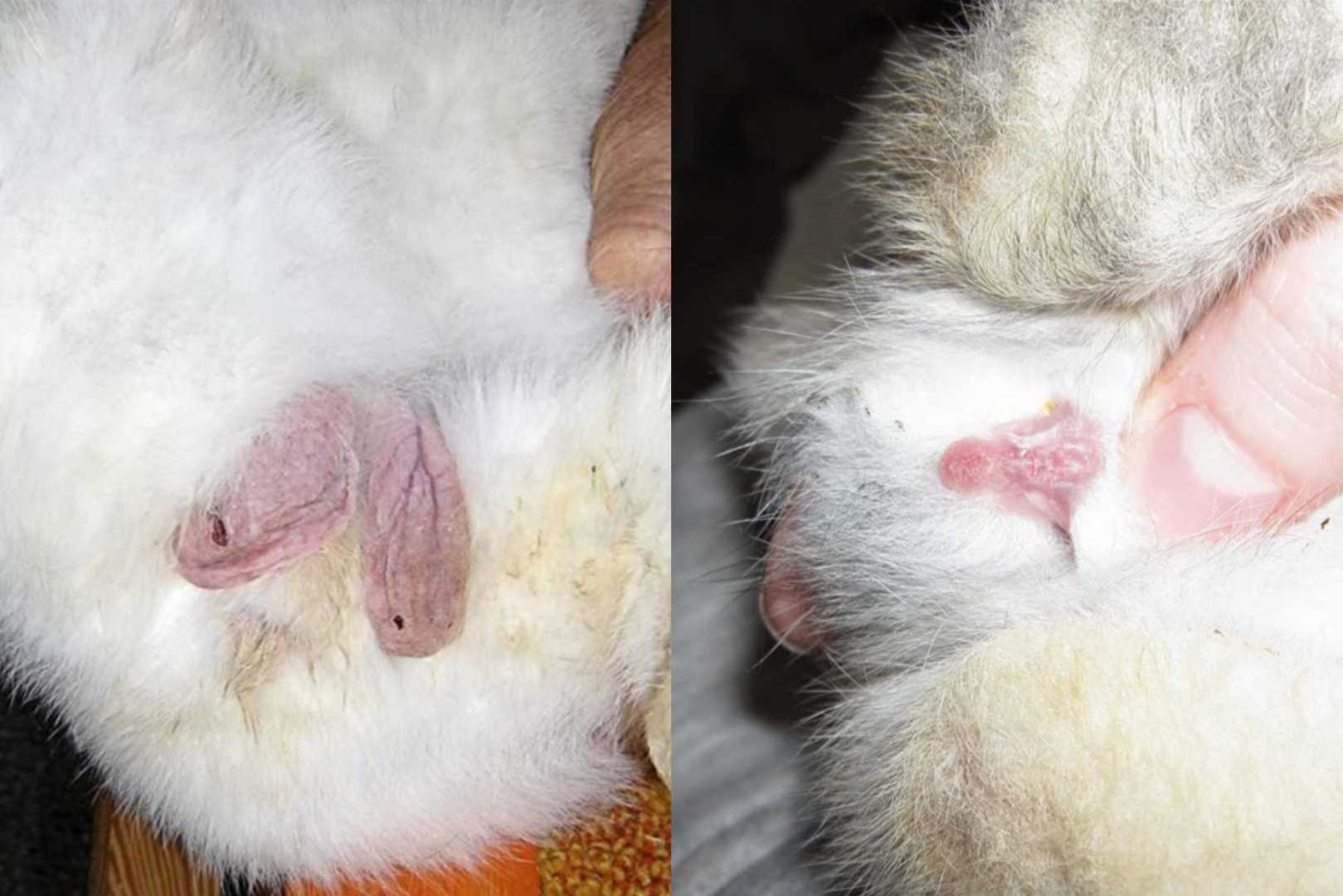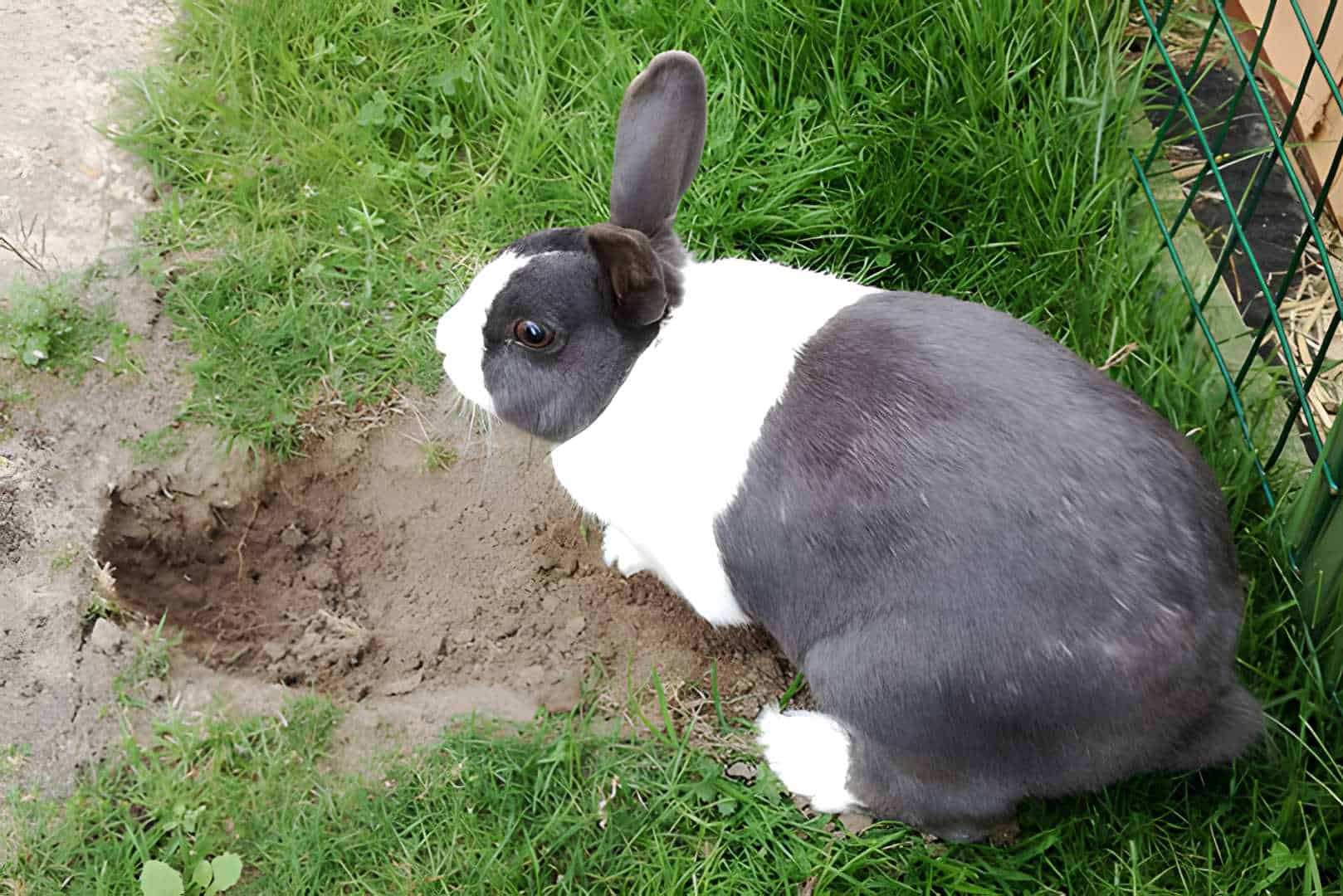Are you familiar with male and female rabbits’ differences? You should. Knowing them has advantages. When you know your rabbit’s sex, you can learn about the benefits and drawbacks of each. You can also understand the characteristics they’ll exhibit. You can effectively care for them and address what they’re dealing with.
10 Key Differences Between Male and Female Rabbits
Are you new to rabbits? The table below shows some key differences between male and female rabbits:
Trait | Male Rabbit | Female Rabbit |
Name | Buck | Doe |
Size | smaller | larger |
Face | Block-like | Round |
Temperament | More passive | Bossy, dominant |
Aggression | Aggressive with other male bunnies | Aggressive with humans |
Digging | Not prone | Prone |
Cohabitation | Will fight with other males | Can live with other rabbits |
Now let’s look at the major differences in detail.
Genitals
Rabbits have a penis or vagina at birth. However, their sexual organs are hidden away in an opening and not fully mature. Hence, it is difficult to tell their gender. You should wait until a kit turns 6-8 weeks old to detect its sex.
Gently turn your rabbit to lie on its hindquarters. Hold it firmly with a single hand. Don’t let it kick or resist. It may develop fractures in its spine or suffer other injuries.
Gently draw its tail outward with your forefinger and index finger. Apply pressure using your thumb on the abdomen right above the opening area. Look for two openings. The anus is closest to the back, and the genitalia is nearest its belly.
Your bunny is a female if there’s a vertical gap close to and above the anus. A circular dot in this spot is the gap on the end of the penis. Firmly press until the genitals begin to protrude. Be extremely cautious because the genitalia is not yet fully formed at this stage. Injuries can happen.
It will be easy to determine the gender of your rabbit once it has reached full maturity. Female bunnies have 4-5 pairs of tiny nipples along their belly. However, you can’t find the male’s nipples because they are undeveloped.
Many species’ females acquire a dewlap. It’s a fleshy pocket below their chin.
Each side of a mature male’s tail has purplish testicles. Each testicle has its scrotal sac, unlike other animals. The testicles are oblong and noticeable. However, a cold or scared bunny can pull them inside its body.
The penis is hidden under a fluffy pile of hair. You can view its tip by gently brushing the hair on both sides. Some female rabbits have bald areas where testicles should have been. However, their skin is smooth and flawless.
A pinkish vulva protects an adult female’s rabbit vagina. This makes it easy to distinguish from the male’s purple scrotal sacs. The vertical slit in the vulva also distinguishes it from the circular hole at the tip of a rabbit penis.
Neutering/Spaying
Neutering male rabbits is a less intrusive, less risky, and less time-consuming procedure. So, it is usually less expensive than spaying a female rabbit. Neutering also has fewer major health risks. It’s less of a problem if you can’t get it neutered straight away as a baby rabbit.
You can save money on neutering and even spaying by adopting. You can acquire a bunny from an animal shelter rather than a pet store or breeder. However, if you enjoy getting a pet while it’s a baby and watching it grow up, you’ll need to factor in the cost of neutering.
On the other hand, spaying takes longer. It is also more difficult than neutering. Hence, the price of a spay procedure is typically higher. It might cost up to $600, depending on your location and the vet office you visit.
It’s also critical to have your rabbit spayed as soon as possible. If female rabbits haven’t been spayed, they have a high risk of acquiring uterine cancer. This increases as they get older. If you can’t afford the pricey expense of spaying, you should obtain a male rabbit. You can also adopt one that has already been treated. [When to Neuter a Rabbit?]
Sexual Behavior
Even single rabbits will show gendered behavior once they hit sexual maturity. For instance, unspayed females will dig breeding dens. They will protect these dens by biting or scratching.
Males can also be hostile. They may grab, hump, or bite your arm out of sexual frustration. They also spray their urine around their cage. This helps them communicate their presence and attract attention.
Neutering or spaying will halt undesirable sexual behavior. However, it may take several months for the rabbit’s hormones to settle down. So, don’t mix your neutered males with an untreated female rabbit for at least six weeks. The males are still fertile several weeks post-surgery.
Territorial Habits
Wild male bunnies use more time foraging outside. As a result, they have lower territorial instincts in protecting their houses from unwanted visitors. In contrast, domesticated pets will not likely bite or lash at their owners stepping into their cage.
Male rabbits may exhibit territorial tendencies in a larger region. It’s uncommon for them to do so in a cage. They may take the entire room where their home is as their territory. So, male rabbits may bite anyone who enters the area. However, this type of behavior usually stops once the animal is neutered.
Contrarily, wild female rabbits will devote more time in their burrow with their young. So, they have a far higher instinct in protecting their space than their counterparts. Female rabbits can likely attack anyone who enters their territory than male bunnies. When you approach their enclosure to pet or feed them, they may bite you.
When a rabbit is spayed, aggressive behaviors usually reduce. But they don’t always go away altogether.
Spraying
The habit of spraying happens when a rabbit marks its territory by urinating in various locations throughout the room. Female rabbits may spray on occasion. But male rabbits do so more often. They would walk into the spot around the burrow. Then they mark the boundaries of their domain to alert any strange rabbits to keep away.
You’ll often deal with pee at the room’s edges, around corners, and within boxes. Due to the high quantity of ammonia in rabbit urine, it can destroy varnished wooden floors and carpeted flooring. Neutering your bunny will usually halt this spraying activity. However, have a decent pet-safe stain remover and cleaner on hand to clean up your bunny’s mess.
When unneutered male bunnies desire to mate, they emanate a musky odor. Male bunnies are more prone to leave your house smelly.
Temperament
Each rabbit has a distinct personality. Therefore, it is difficult to distinguish male and female rabbits’ differences in personality. You can’t predict your rabbit’s temperament by their gender. Male rabbits seem to be more laid-back and friendlier. A male rabbit will probably be best for you if you want a highly social bunny.
In contrast, female bunnies usually have more assertive personalities than male rabbits. They’ll usually be obstinate and daring. They act as if they’re a gorgeous princess of the house. However, female rabbits seem more aloof toward humans than male rabbits. They might not want to hang out with anyone and love to be alone.
But, once a doe decides she likes you and takes you into her circle, she is quite affectionate and loving. It will more likely touch you to express her appreciation.
Mounting
Male rabbits tend to hump or mount over anything. This behavior is more common in unneutered males. But it can persist long after surgery. Mounting isn’t a bad thing in and of itself. However, it could be bothersome or risky depending on what your pet is wanting to hump.
Digging
Female rabbits like digging new tunnels in the open. They also carve smaller tunnels and use them as nests when they’re ready to bear babies. Female rabbits tend to be more determined diggers than bucks.
They’ll rip up carpets, hardwood floors, cardboard, and anything underfoot. So, you should rabbit-proof your home.
This highly destructive behavior can be hard to control. Most rabbits keep doing it even after they’ve been spayed.
Digging is something you can’t train them to quit doing. Instead, discover ways to provide your rabbit with stuff to play with while safeguarding your home.
Cleanliness
Female rabbits look generally cleaner than male ones. They also smell less. As mentioned above, they are less likely to spray even if they sometimes do. In addition, they also have good litter boxes and self-grooming activities. This is why they have a milder odor than male rabbits.
Defecating
Male rabbits look generally smaller and have a blockier head than females. They also handle feed in different ways. Male and female bunnies eat nearly the same quantity of food. However, females tend to weigh more. But males produce more excrement.
Summary
Distinguishing between a female and a male rabbit can be challenging. They do not differ much in terms of physical appearance. Examining their genitals is the only method to identify if it’s a male or female. Understanding male and female rabbits’ differences will help you manage them successfully.






I have a male himalayan, he likes to hump every rabbit he encounter, front-back-male-female, he seems unable to insert it though, just humping, but persistent, he chase his target all day, makes the other rabbit nervous.
Can he just do it once and for all? So he can stop harrassing other rabbit?
Male himalayans often exhibit humping behavior, but it can be reduced through neutering. Consult a veterinarian for neutering options and its benefits. It could help reduce the humping behavior and make the other rabbits less nervous.
ALL rabbits do that during their bonding process. It’s how they establish dominance and it has nothing to do with him being a male, females do it also. It’s stressful behavior for both rabbits involved though, so you definitely shouldn’t let it continue without properly bonding them. It also has nothing to do with him being neutered or not- even though you should definitely have him neutered regardless.
Google “how to bond rabbits” and you’ll learn a lot.
He needs to be neutered!